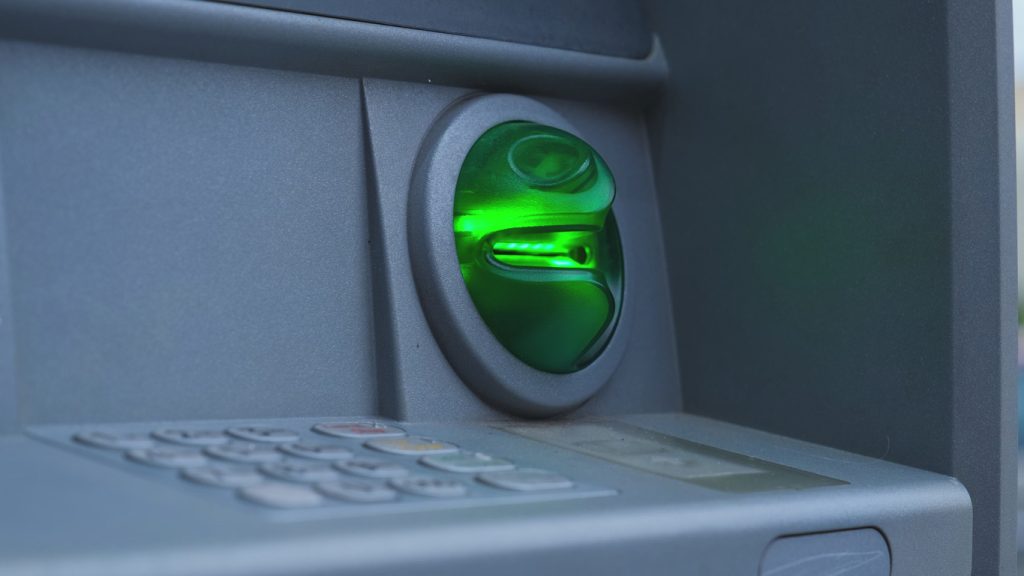
The “Skimming” Scam: Technology, Thieves, and ATM Machines
Imagine this: Right now, there’s a band of tech-savvy crooks prowling the city, outfitting ATM machines (and, in some cases, gas station pumps, and retail point-of-sale readers) with sophisticated gadgets designed to steal debit card numbers, PINs, and – of course – your money. These guys are highly organized, and they’re armed with nearly undetectable spy cameras, Bluetooth devices, and fake card readers that are virtually indistinguishable from the real thing.
It sounds like the plot of a bad TV movie. Unfortunately, though, this is no movie. This type of ATM-based theft – called “skimming” – is very real. And experts say it’s on the rise.
How Skimming Works
Although skimming setups can vary, there are generally two major pieces of equipment involved in ATM skimming:
1. A phony card reader. To steal your debit card data, tech-savvy thieves place phony card readers directly over the ATM’s card reader. In most cases, the fake readers fit snugly over the real reader — and since they don’t interfere with your ability to swipe your card, they can be fairly hard to detect. When you use a machine outfitted with a fake card reader, the information stored on the magnetic strip on the back of your card is captured and stored on the device.
Of course, in order to use that information, crooks need one more thing: Your PIN number. That’s why they need a second piece of equipment . . .
2. A fake keypad or a hidden camera. Fake keypads are designed to look like part of the actual machine. Just like the fake card readers, fake keypads fit over the machine’s real keypad. These devices are designed to record keystrokes – this is how some scammers obtain your PIN number. Not every skimming scam involves a phony keypad, though: Some criminals use hidden cameras instead. These cameras are very small, and they can be hidden just about anywhere – but they’re typically placed somewhere with a good, unobstructed view of the machine’s screen and keypad.
In most cases, a crook will set up skimming gear on a busy ATM machine, wait several hours, and then come back to collect the equipment – plus the debit card information and PIN number that’s been captured. In other cases, the skimming equipment is equipped with Bluetooth, which transmits the stolen information instantly.
How to Protect Yourself
Want to make sure you don’t fall victim to a skimming scam? Use this ATM safety checklist before you swipe your card:
- Inspect the machine: Does the PIN pad look crooked? Is the card reader the same color and material as the rest of the machine? Do you see anything suspicious, such as tape residue (skimmers often use double-sided tape to attach their own card readers or keypads), tiny holes, or strange-looking extra parts? Are there any loose parts? Those could be signs that the machine has been tampered with.
- Check around the machine. If you’re using an ATM machine located in, say, a bank lobby or in a convenience store, make sure you check the areas around the machine, too. Fixtures like shelves or magazine racks can provide the perfect hiding place for a video camera.
- Cover the screen and/or keypad with your hand. The whole point of hidden cameras is to record you as you key in your PIN number. Make things difficult by simply using your hand as a shield when prompted for your PIN.
- Avoid using ATMs located in tourist areas. Sure, skimming can happen anywhere – at your local drugstore, at your bank’s drive-up ATM, or even at your corner gas station. But most experts say that scammers are more likely to hit up high-traffic cash machines. The safest bet is to stick to familiar machines – get your cash before you go somewhere new.
- Be wary of “out of order” signs. In locations with multiple ATMs, thieves will try to direct traffic to the machine outfitted with skimming equipment. One common technique is to stick an “out of order” or “please use next machine” sign over the machine that hasn’t been tampered with – leading unwitting customers to the one with the phony card reader or the hidden camera.
- Read your bank statements and monitor your account activity. One of the best ways to protect yourself from scammers is to pay close attention to your banking activity. Don’t assume that everything is okay, and don’t assume that your bank will always pick up on fraud. If you notice any suspicious charges or withdrawals, call your bank right away.
